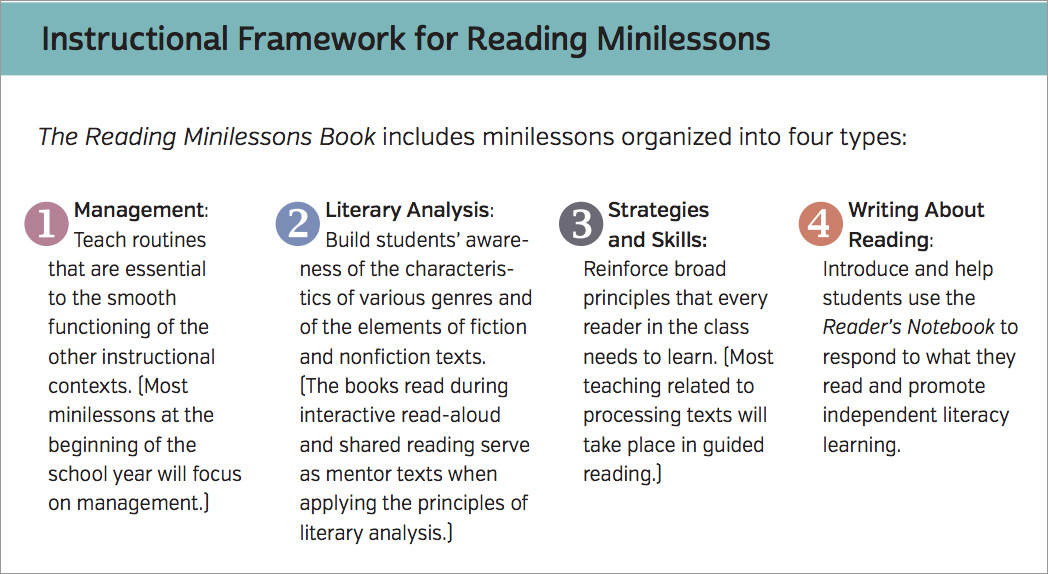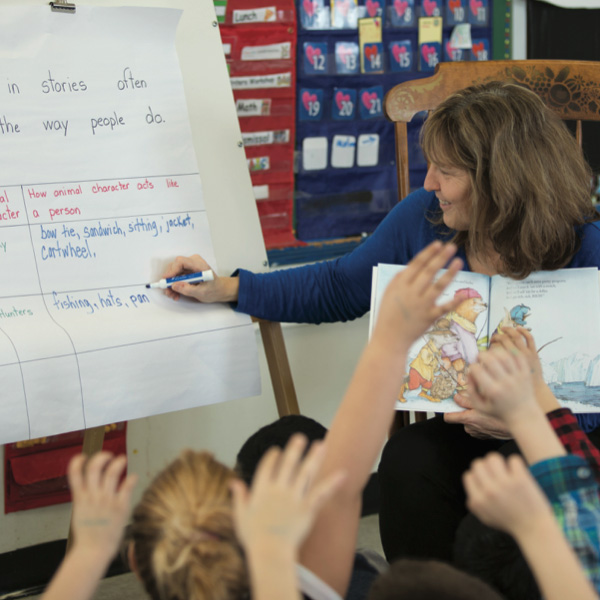The Fountas & Pinnell Classroom™ Reading Minilessons Book
The Reading Minilessons Book provides brief, focused and practical whole-class lessons on the topics of Management, Literary Analysis, Strategies and Skills, and Writing About Reading.
Develop students’ deep knowledge of literacy concepts through minilessons.
What is it?
Reading Minilessons are short, concise, explicit, inquiry-based lessons about a principle that students can apply to their own independent reading. Growing out of the interactive read-aloud experience and linked to independent reading, teachers use many of these texts as examples from which they generalize the understanding.
The Reading Minilessons Book, Digital Edition
The Reading Minilessons Book, Paperback/Digital Bundle

Who is it for?
The Reading Minilessons Book is for the classroom teacher who wants to expand and refine children’s reading and writing powers in grades K–6. This context is implemented in a whole-group setting. Teachers engage children in inquiry that leads the discovery and understanding of a general principle.

What is inside?
The Reading Minilessons Book includes minilessons organized into four types.
Each of the four types of reading minilessons is organized into broad categories, or "umbrellas." An umbrella is a grouping of related minilessons. Presenting several lessons within one umbrella helps children develop a deeper understanding of concepts and their application. As lessons build on each other, teachers will often make an anchor chart, or visual representation, that can be referenced again and again as children encounter new texts and/or minilessons.

How is it implemented?
The Reading Minilessons Book is implemented during whole-group instruction. During a reading minilessons, the teacher presents specific, explicit instruction to help children become independent readers for life. The minilessons are organized into four types:
- Management
- Literary Analysis
- Strategies and Skills
- Writing About Reading
The Interactive Read-Aloud texts serve as mentor texts and as examples for generalizing the principle. Children practice and apply the principle during independent reading.



